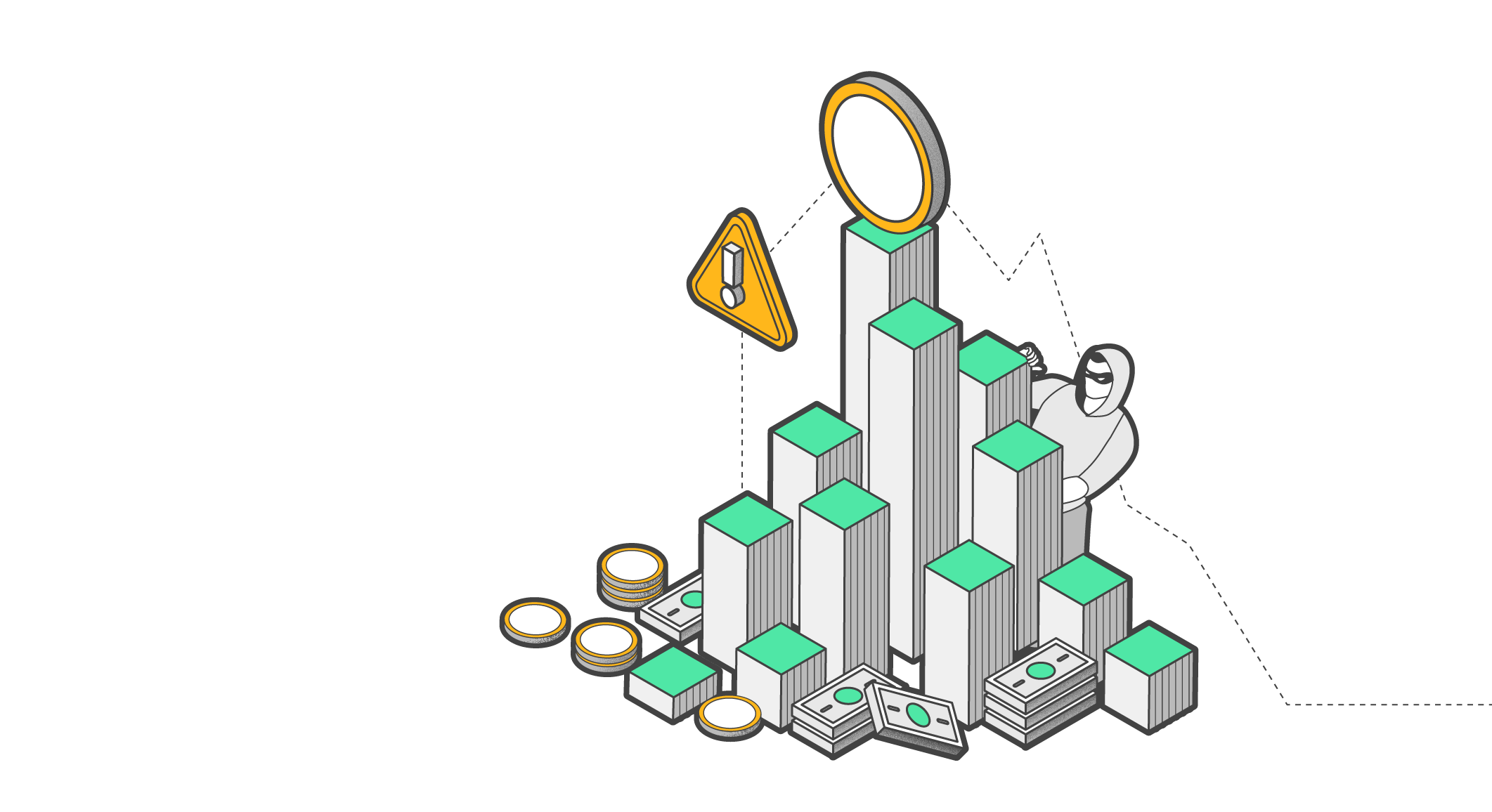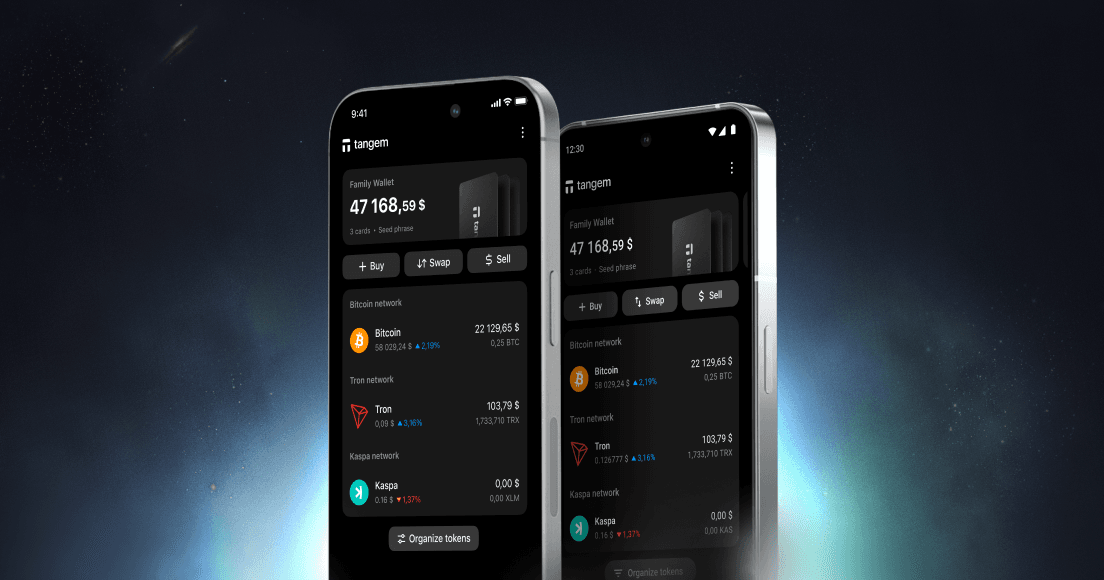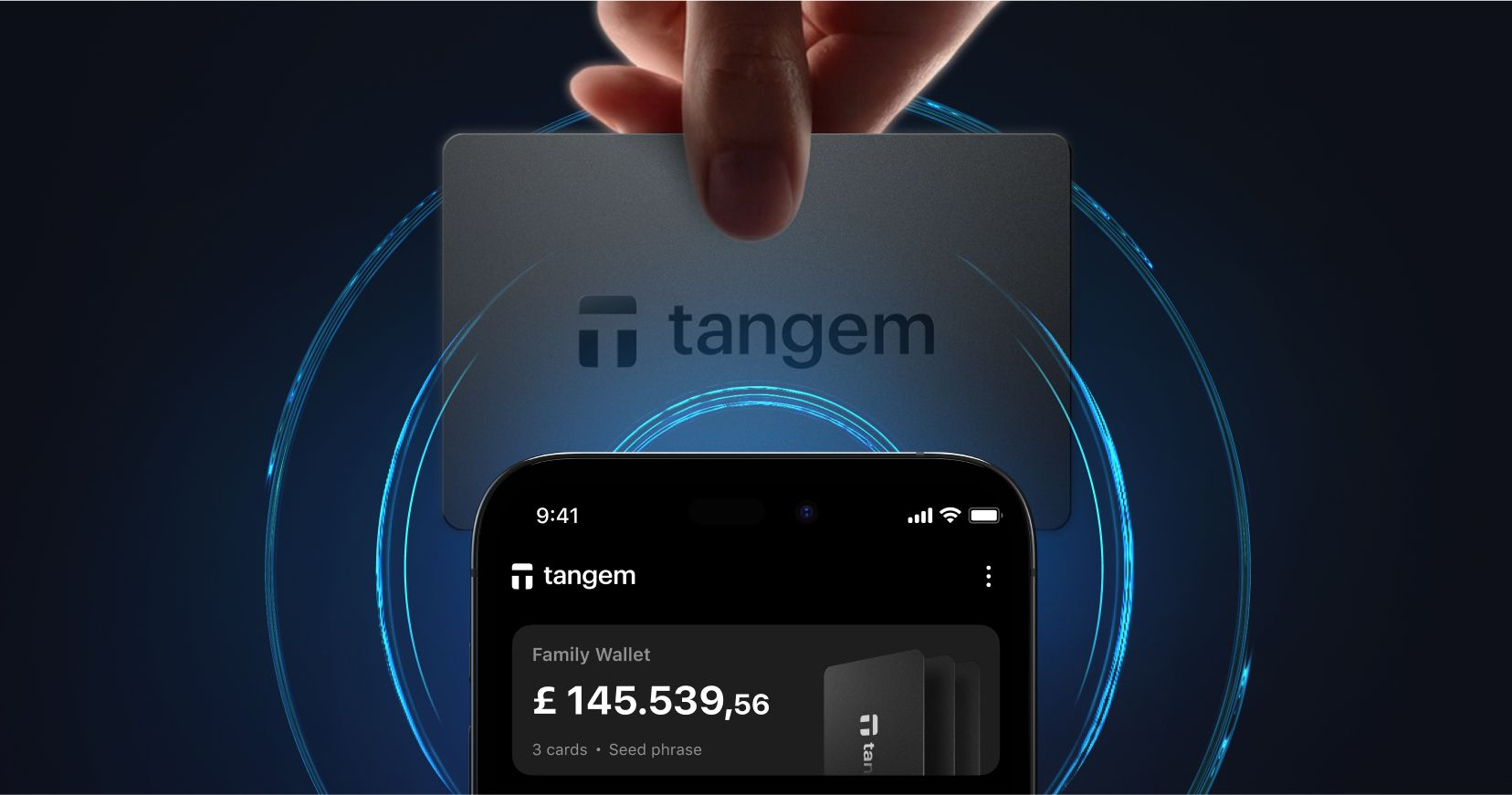
What Is Fully Diluted Valuation (FDV) In Crypto?

- What is fully diluted valuation (FDV)?
- Why is a cryptocurrency's FDV important?
- How to calculate fully diluted valuation
- FDV vs. market cap
- How CoinGecko & CoinMarketCap Display FDV
- How FDV Affects Early-Stage Projects vs. Established Cryptos
- How Token Burns Influence FDV
- Risks and Limitations of FDV
- Common FDV Red Flags to Watch For
- Real-World Examples of FDV in Action
- Key takeaways
- Conclusion
The Fully Diluted Valuation (FDV) is an essential metric in the cryptocurrency space that helps investors understand a project's potential market value. It represents the total market capitalization of a cryptocurrency if all possible tokens were in circulation, including currently circulating tokens and those yet to be released, such as locked or reserved ones.
By calculating FDV, investors can assess the long-term value of a project, identify potential risks, and make informed decisions before investing. This article will explore how FDV works and its significance in the crypto industry.
What is fully diluted valuation (FDV)?
Fully diluted market cap or fully diluted valuation (FDV) is the overall value of a cryptocurrency project, considering all of its tokens in circulation. Investors use it to assess the project's future potential, similar to the stock market's total number of issuable shares.
Why is a cryptocurrency's FDV important?
The fully diluted valuation statistically represents the cryptocurrency project's highest value when all coins are in circulation. This provides investors with a broader perspective of the project.
The total number of tokens circulating for most cryptocurrency projects may fluctuate weekly. As more tokens are created through mining, rewards for staking or providing liquidity, the release of vested tokens, or the minting of new tokens, the total number of tokens in circulation rises. As tokens are burned, the total number of deflationary tokens in circulation decreases.
It's now popular to release a tiny percentage of the token's maximum supply upon launch. Since there aren't many tokens in use, these projects are presumably “undervalued” in light of their current market capitalization and fundamentals.
If demand doesn't rise correspondingly, the price of each token may begin to fall as more are released and put on the market. Investors who do not consider these potential fluctuations in supply could lose money when additional tokens are sold into the market.
FDV is particularly useful for evaluating early-stage projects with large token allocations to founders, teams, or investors. By accounting for all tokens, FDV provides a more accurate picture of a project's potential future value.
How to calculate fully diluted valuation
The FDV considers the entire supply of tokens—not just the ones in circulation. A token's total supply can be found in the project's documentation or on Coingecko's tokenomics page. The smart contract details of tokens created on smart contract blockchains can also provide this information.
The fully diluted valuation of a cryptocurrency project is calculated by multiplying the token's entire supply by the token's current price.
Fully Diluted Valuation = Token Price X Total Supply
The total supply consists of both tokens currently in circulation and tokens awaiting distribution, except for any coins that have been burnt (removed from circulation), the total supply consists of both tokens that are currently in circulation and tokens that are awaiting distribution.
It is similar to the total number of shares outstanding on the stock market. The market capitalization of the cryptocurrency is projected using the fully diluted valuation, assuming that all tokens—aside from those burned in use—are present.
FDV vs. market cap
Fully diluted valuation and market cap (short for 'market capitalization') differ significantly.
A cryptocurrency's market cap is determined by the number of tokens in circulation and their current prices. Any changes in these factors can impact the market cap. Increased demand can drive up token prices and result in a higher market cap.
Let's examine the mathematical differences between FDV and market cap:
Token Price X Circulating Supply = Market Cap
Token Price x Total Supply = FDV.
When all its tokens are in circulation and can be traded on exchanges, a token's total supply equals its circulating supply. In this case, the FDV and market cap are the same value.
The FDV indicates the anticipated future value. Most tokens in projects with tiny market capitalizations may be vested and slated for release soon. If these tokens had been released, the project's worth would have been as shown by the FDV statistics (ignoring the demand variable). As an investor, it is up to you to decide if the project is worth this estimated amount.
How CoinGecko & CoinMarketCap Display FDV
Popular crypto data platforms like CoinGecko and CoinMarketCap display both Market Cap and FDV for most tokens. This allows investors to compare a project's current valuation (Market Cap) with its potential future valuation (FDV).
How FDV Affects Early-Stage Projects vs. Established Cryptos
For early-stage projects, FDV is often much higher than Market Cap due to the large number of locked or yet-to-be-released tokens. For established cryptocurrencies, FDV and Market Cap are often closer, as most tokens are already in circulation.
How Token Burns Influence FDV
Some projects implement token burn mechanisms, where a portion of the token supply is permanently removed from circulation. This can reduce the total supply and, in turn, lower the FDV.
Staking, Governance Tokens, and FDV Fluctuations
Tokens used for staking or governance often have complex supply dynamics, as they may be locked or released based on network activity. These mechanisms can cause FDV to fluctuate over time.
Risks and Limitations of FDV
One of FDV's main risks is that it can overestimate a project's true value, especially if a large portion of the token supply is locked or yet to be released. This can lead to unrealistic expectations among investors. A high FDV can sometimes deter investors, as it may indicate that a project is overvalued or that there is significant inflation risk due to future token unlocks.
Examples of Misleading FDV in Past Crypto Projects
The Fully Diluted Valuation metric can sometimes paint a deceptive picture of a cryptocurrency's true value, especially when projects manipulate tokenomics or fail to deliver on promises. Below are several notable examples of FDV metrics misled investors and key lessons learned.
Terra (LUNA) - The Algorithmic Stablecoin Collapse
At its peak in early 2022, Terra's FDV exceeded $40 billion based on its max supply of 1 billion LUNA tokens. The valuation ignored critical flaws in its algorithmic stablecoin design, making the entire ecosystem fragile.
Terra's FDV calculations didn't account for the infinite mint/burn mechanism that could exponentially increase supply during a crisis. When UST lost its peg in May 2022, LUNA's supply ballooned from 350 million to 6.5 trillion tokens in days, rendering its FDV meaningless.
Lesson: Projects with dynamic supply mechanisms can make FDV calculations irrelevant overnight.
2. Axie Infinity (AXS): The Play-to-Earn Bubble
In November 2021, AXS hit an FDV of nearly 45 billion at its peak price of 165. This valuation assumed all 270 million tokens would maintain value upon release. As token unlocks accelerated in 2022, the circulating supply grew from 61 million to 135+ million tokens. Its price collapsed to under $5, showing how FDV grossly overstated sustainable valuation.
Lesson: FDV often fails to account for sell pressure from vesting schedules and declining ecosystem activity.
3. Solana (SOL): The VC dumpster fire
SOL reached an FDV of 75 billion during its November 2021 peak (260 per token). Over 60% of the supply was locked with venture capitalists and the foundation. As tokens unlocked through 2022, the price collapsed to $10 (a 97% drop from ATH). The $75 billion FDV proved completely detached from sustainable demand levels.
Lesson: When insiders control most supply, FDV becomes a theoretical maximum rather than a realistic valuation.
4. STEPN (GMT): The play-to-earn fad
At its April 2022 peak, GMT's FDV hit $25 billion based on 6 billion token supply. This valuation occurred with less than 10% of tokens in circulation. As user growth stalled and tokens unlocked, its price fell from $4 to $0.05 The $25 billion FDV implied unsustainable demand for a simple fitness app.
Lesson: FDV often overvalues niche utility tokens by orders of magnitude.
5. Internet Computer(ICP): Overhyped launch
ICP launched in May 2021 with an immediate FDV exceeding $120 billion. Less than 25% of the supply was circulating at launch. Its price collapsed from 700 to under 5 within a year. The $120 billion FDV made no sense for an unproven protocol with minimal usage.
Lesson: New projects with small float can sthe how ridiculous FDVs that bear no relation to the actual value.
Common FDV Red Flags to Watch For
Low Float/High FDV Projects
When less than 20% of supply is circulating, be extremely cautious of FDV claims.
Aggressive Vesting Schedules
Projects that unlock large percentages (>5% monthly) often collapse under sell pressure.
No token burns or supply controls
Inflationary tokens without mechanisms to reduce supply often see FDV become meaningless.
Disproportionate FDV to actual usage
A 10 Billion FDV for a protocol with less than $1 million in daily revenue is a major warning sign.
Real-World Examples of FDV in Action
Bitcoin’s FDV is relatively stable because its total supply is fixed at 21 million BTC, and most tokens are already in circulation. This makes Bitcoin’s FDV and Market Cap very close.
Ethereum’s FDV is influenced by its staking mechanism, which locks up a portion of the token supply. As more ETH is staked, the circulating supply decreases, which can impact both Market Cap and FDV.
Another example is Chainlink, which has a significant portion of its token supply locked or reserved for future use. This means that its FDV is much higher than its Market Cap, reflecting the potential future dilution of the token supply.
Polkadot’s FDV is influenced by its treasury and governance mechanisms, which can lock or release tokens based on network activity. This creates a dynamic relationship between Market Cap and FDV.
When FDV is useful for investment decisions
FDV is particularly useful for evaluating early-stage projects or those with significant token unlocks. It provides a forward-looking perspective that can help investors assess potential risks and rewards.
Key takeaways
- Fully Diluted Valuation (FDV) is a metric used to estimate the total market value of a cryptocurrency if all its tokens were in circulation.
- FDV is calculated by multiplying the current token price by the total supply of tokens, including those that are locked, reserved, or yet to be released.
- Unlike market cap, which only considers circulating supply, FDV provides a broader perspective on a project's potential valuation.
FDV is particularly important for evaluating early-stage projects, assessing token unlock schedules, and understanding inflation risks.
- While FDV is a useful tool, it should be used alongside other metrics like Market Cap, tokenomics, and fundamental analysis to make informed investment decisions.
Conclusion
When used effectively, FDV is a useful statistic that helps investors assess how well a project performs in terms of tokenomics. Depending on the token release timetable, the time it takes for vested tokens to go into circulation could be many months. Those who intend to hold onto their assets for the duration should consider the impact this additional supply will have on the cost of each token.
As additional tokens get unlocked, there's a reasonable likelihood that the value per token will drop if the fully diluted valuation displays an irrational valuation. The FDV is probably more reasonable when the project has solid foundations and a sustainable token release schedule.
Cryptocurrency projects often provide information on their token's maximum and circulating supply, the distribution of circulating tokens, and upcoming release schedules. Each of these details is critical and influences the project's valuation.











